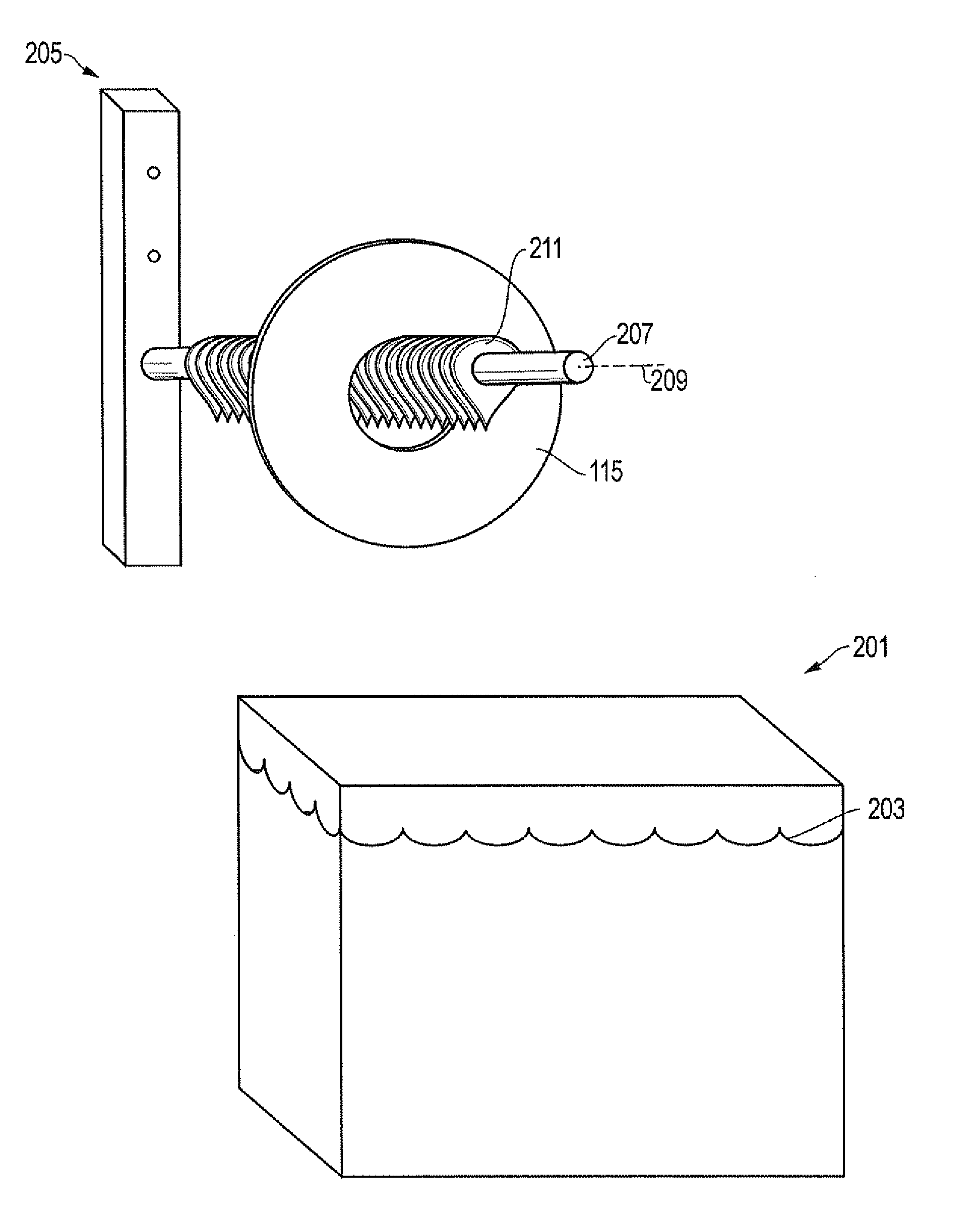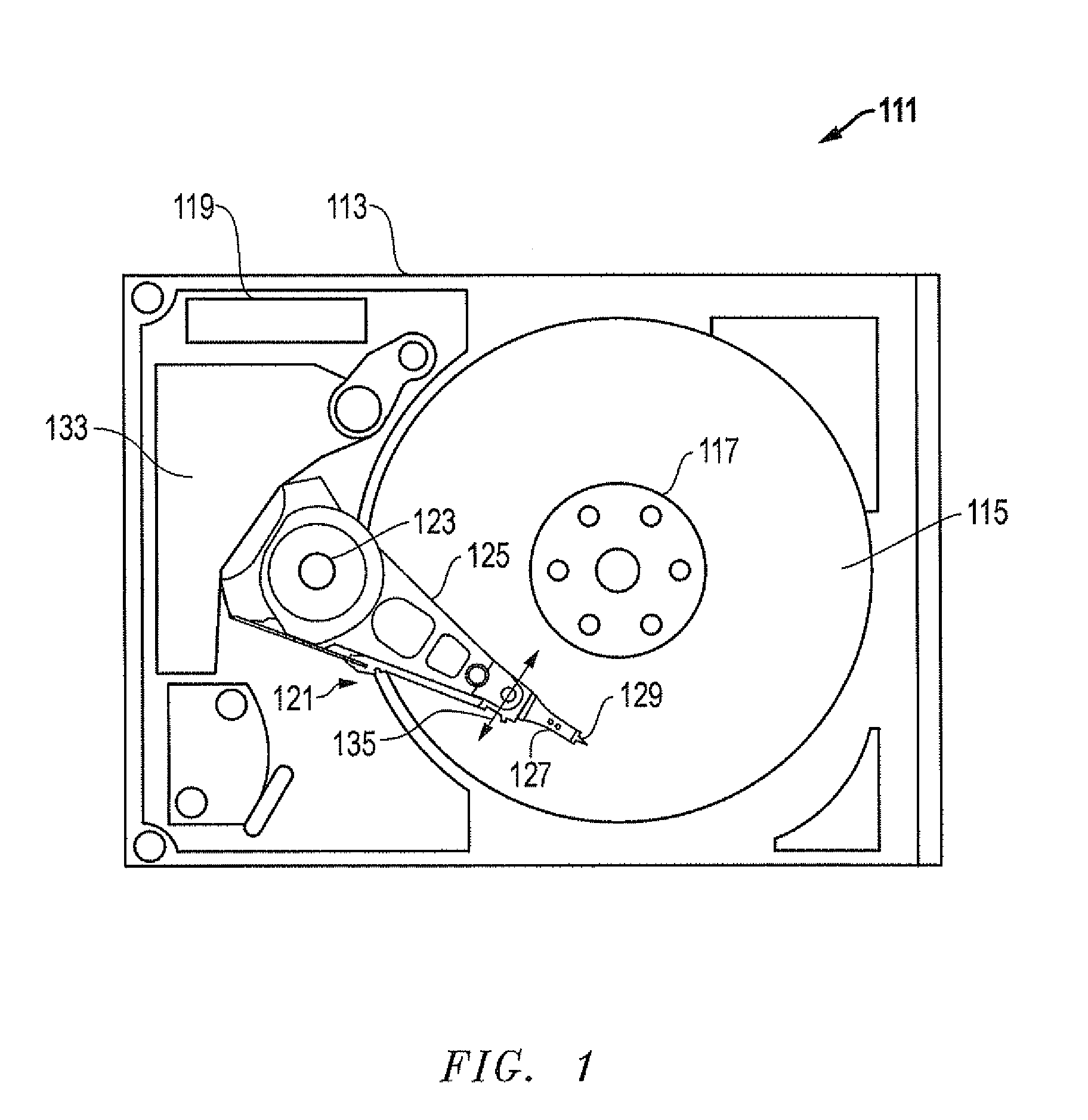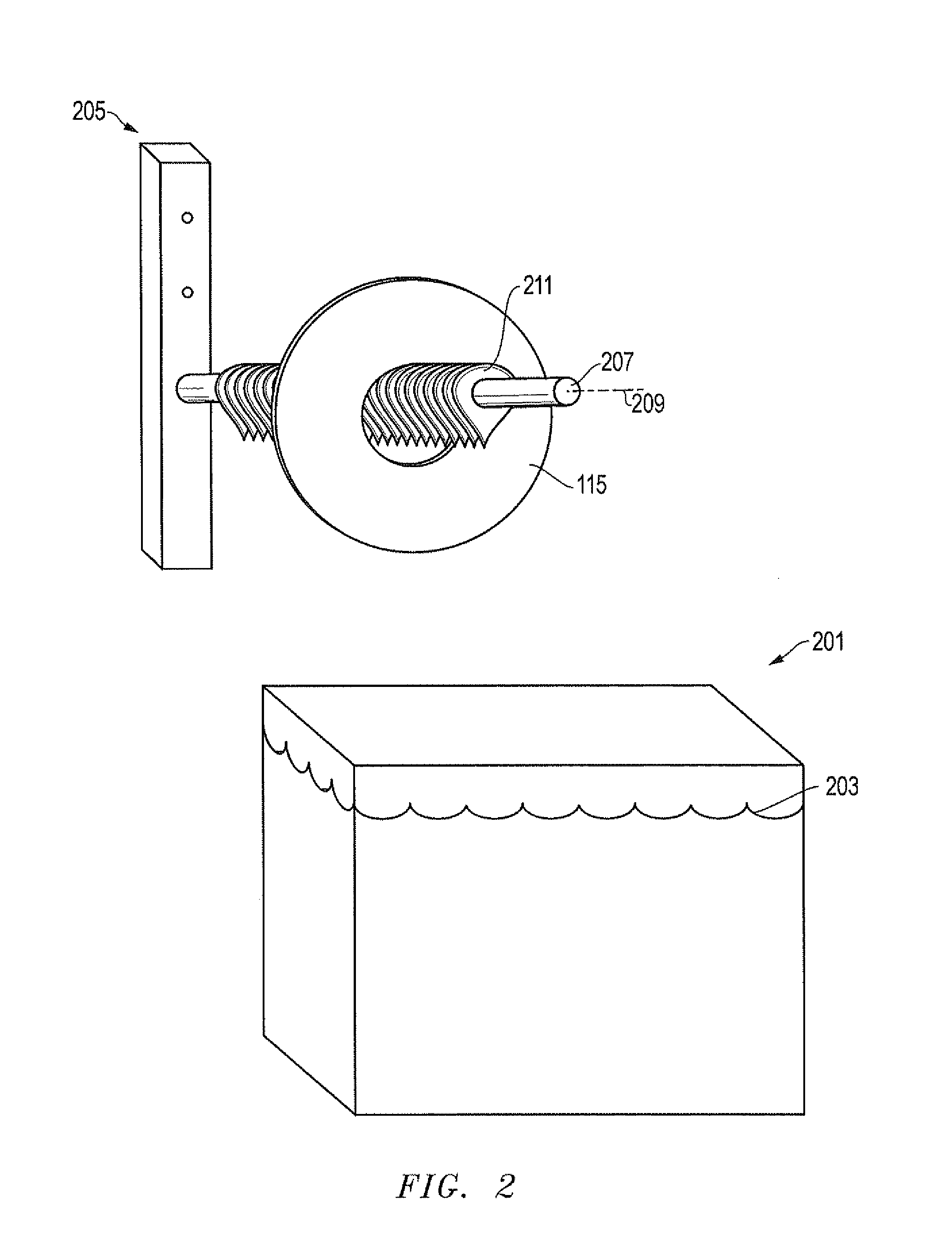System, method and apparatus to prevent the formation of lubricant lines on magnetic media
- Summary
- Abstract
- Description
- Claims
- Application Information
AI Technical Summary
Benefits of technology
Problems solved by technology
Method used
Image
Examples
Embodiment Construction
[0019]Referring to FIG. 1, a schematic drawing of one embodiment of an information storage system comprising a magnetic hard disk file or drive 111 for a computer system is shown. Drive 111 has an outer housing or base 113 containing at least one magnetic disk 115. Disk 115 is rotated by a spindle motor assembly having a central drive hub 117. An actuator 121 comprises one or more parallel actuator arms 125 in the form of a comb that is pivotally mounted to base 113 about a pivot assembly123. A controller 119 is also mounted to base 113 for selectively moving the comb of arms 125 relative to disk 115.
[0020]In the embodiment shown, each arm 125 has extending from it at least one cantilevered load beam and suspension 127. A magnetic read / write transducer or head is mounted on a slider 129 and secured to a flexure that is flexibly mounted to each suspension 127. The read / write heads magnetically read data from and / or magnetically write data to disk 115. The level of integration called ...
PUM
 Login to View More
Login to View More Abstract
Description
Claims
Application Information
 Login to View More
Login to View More - R&D
- Intellectual Property
- Life Sciences
- Materials
- Tech Scout
- Unparalleled Data Quality
- Higher Quality Content
- 60% Fewer Hallucinations
Browse by: Latest US Patents, China's latest patents, Technical Efficacy Thesaurus, Application Domain, Technology Topic, Popular Technical Reports.
© 2025 PatSnap. All rights reserved.Legal|Privacy policy|Modern Slavery Act Transparency Statement|Sitemap|About US| Contact US: help@patsnap.com



